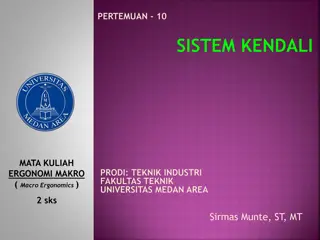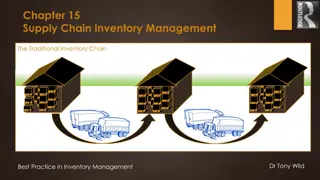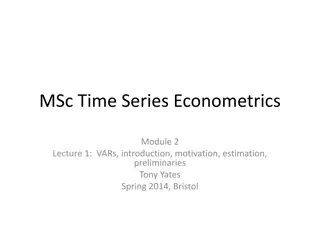
Precision Control and Monitoring System for Ion Trap Experiment
This project involves the development and coordination of advanced control systems for delivering ions with precise timing, along with electronic decelerator and performance monitoring capabilities. The system utilizes various components such as BNC Digital Delay Generators, Multi-Line Drivers, and existing platforms for activation and monitoring. Risks and outlook are also addressed for each development phase.
Download Presentation

Please find below an Image/Link to download the presentation.
The content on the website is provided AS IS for your information and personal use only. It may not be sold, licensed, or shared on other websites without obtaining consent from the author. If you encounter any issues during the download, it is possible that the publisher has removed the file from their server.
You are allowed to download the files provided on this website for personal or commercial use, subject to the condition that they are used lawfully. All files are the property of their respective owners.
The content on the website is provided AS IS for your information and personal use only. It may not be sold, licensed, or shared on other websites without obtaining consent from the author.
E N D
Presentation Transcript
HAICU Update UBC Momose Lab - HAICU Controls Status - -
System Control Deliverables 6 1 5 Precisely timed controls of apparatus to deliver a 20 m/s packet of ions at the entrance to the trap 4 2 3 1. The UBC delivered components each have drive electronics so a single TTL edge can be used to initiate operation. System timing controller Two BNC Digital Delay Generators will generate trigger signals for each component of the system If required (for instance, during alignment) the laser Flash and Qswitch are also generated by the DDG 2. Laser detection requires 10 Hz flashlamp and Q-Switch (system heartbeat)
Decelerator Electronics MLD Development The decelerator electronics will require more than 270 channels of digital control with 10 nS edge placement resolution. A UBC design Multi-Line Driver (MLD) can provide 96 lines, so 4 MLDs will be used for HAICU decelerator control. TRIUMF Digital Development Team has rewritten firmware and Host software to improve performance and stability. Progress Stable USB control ready for use in January Conversion to Ethernet ready for us in March (but conversion is transparent to other software). Issues such as FPGA module end of life and useability enhancements will follow Outlook Ethernet capability added by March will improve noise immunity and stability and simplify setup. Risks Resources from Electronics Group are currently unofficially provided to our group. We should apply for approved resources to ensure that programming work can be done to some schedule.
System Control Scope Coordination of the activation of each subsystem to achieve desired packet of H2 arriving at the trap. Using 2x 8 channel BNC DDG to trigger nozzle, deceleration stages, bender, and detection laser. Progress Momose lab has existing platform for this Outlook Ready. Risks None anticipated.
Performance Monitoring Requirement Shot to shot monitoring of current through each decelerator trap for tuning and failure detection Progress Momose lab has existing platform for this working on a 16 tunebox system Outlook 32 tunebox system ready for March. Risks None anticipated.






















